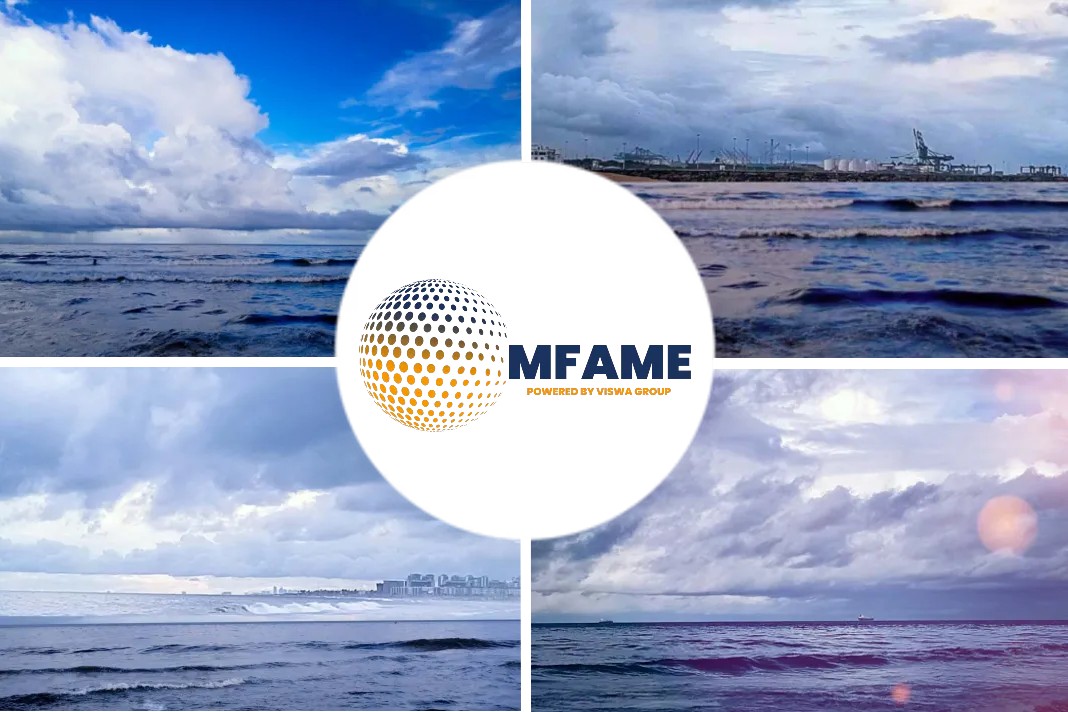Since Feb 20, the “Akacia” was berthed inside the damaged lock of the Kiel-Canal in Kiel-Holtenau at 3.30 p.m. along with the tug “Wolf”, which had managed to pull it out of the gate within 30 minutes.
What happened?
Experts of the shipping company Peter Döhle, and the Brunsbüttel based salvage company Schramm had previously lightened the freighter by pumping out ballast water. Bent steel parts of the 1,000-ton gate crashed into the water during the maneuver, and ripped off friction wood plunged in spray fountains from the bulbous bow into the lock chamber. The Acacia could only be pulled to the Voith Quay in the North Port of Kiel, during an identical water level between the Kiel Fjord and the canal, as the destroyed lock gate on the fjord side was no longer sealed in order to establish the necessary water level in the chamber. A hole, the size of a house was gaping in the gate, through which water could currently flow fiercely from the fjord into the lock chamber. Once the canal and the fjord had an equal level, the “Wolf” together with the SFK tug “Holtenau” would pull the “Akacia” back into the canal at 11.30 a.m. At 12.20 p.m., the ship was berthed at the Voith Quay in the North Port of Kiel. Meanwhile, the first cleanup has started in Holtenau.
The Rescue Operation
First, divers started examining the heavily damaged lock gate. It was a priority to check the 16 tanks of the gate. Only if these have remained largely intact, the gate may be floated out. For this purpose, compressed air must be blown into the tanks of the gate to generate the required buoyancy. And it was important that enough tanks and compressed air lines have remained undamaged. Later the statics of the construction has to be calculated. If the tanks and compressed air lines have been damaged, they must first be sealed, which could take weeks or even months. However, if the tanks have remained intact, the gate could be swum out and replaced already at the weekend by one of the two reserve gates which were in readiness at the inner port in Holtenau.
The Cause
Initial investigation of the water police followed by the Federal Bureau of Maritime Casualty Investigation had shown that the freighter had increased speed at the Holtenau Canal Bridge instead of slowing down, and thereby also exceeded the allowed maximum speed for the canal. The surveys hardened the suspicion that the pitch propeller had triggered the accident. The adjustable blades of the propeller had gone to the “full ahead” position due to a damage in the control system, while the controls on the bridge showed “stop”. When the captain and the pilot noticed the mistake, they immediately stopped the machine and dropped the two anchors, so that at least some speed could be taken out of the ship before it hit.
Actions Taken
The shipping company of the “Akacia” now examined various options for their further actions. This included the transhipment of containers to another ship. The ship was, at the time of the accident, on behalf of the Danish Maersk Line underway, with containers from Bremerhaven to St. Petersburg.
These actions will help us avoid such accidents in the near future.
Did you subscribe for our daily newsletter?
It’s Free! Click here to Subscribe!
Source: Schleswig-Holsteinischer Zeitungsverlag



















By Mfame Team -, thank you for this post. Its very inspiring.
? operational emergency control (NFU) of main engine ?